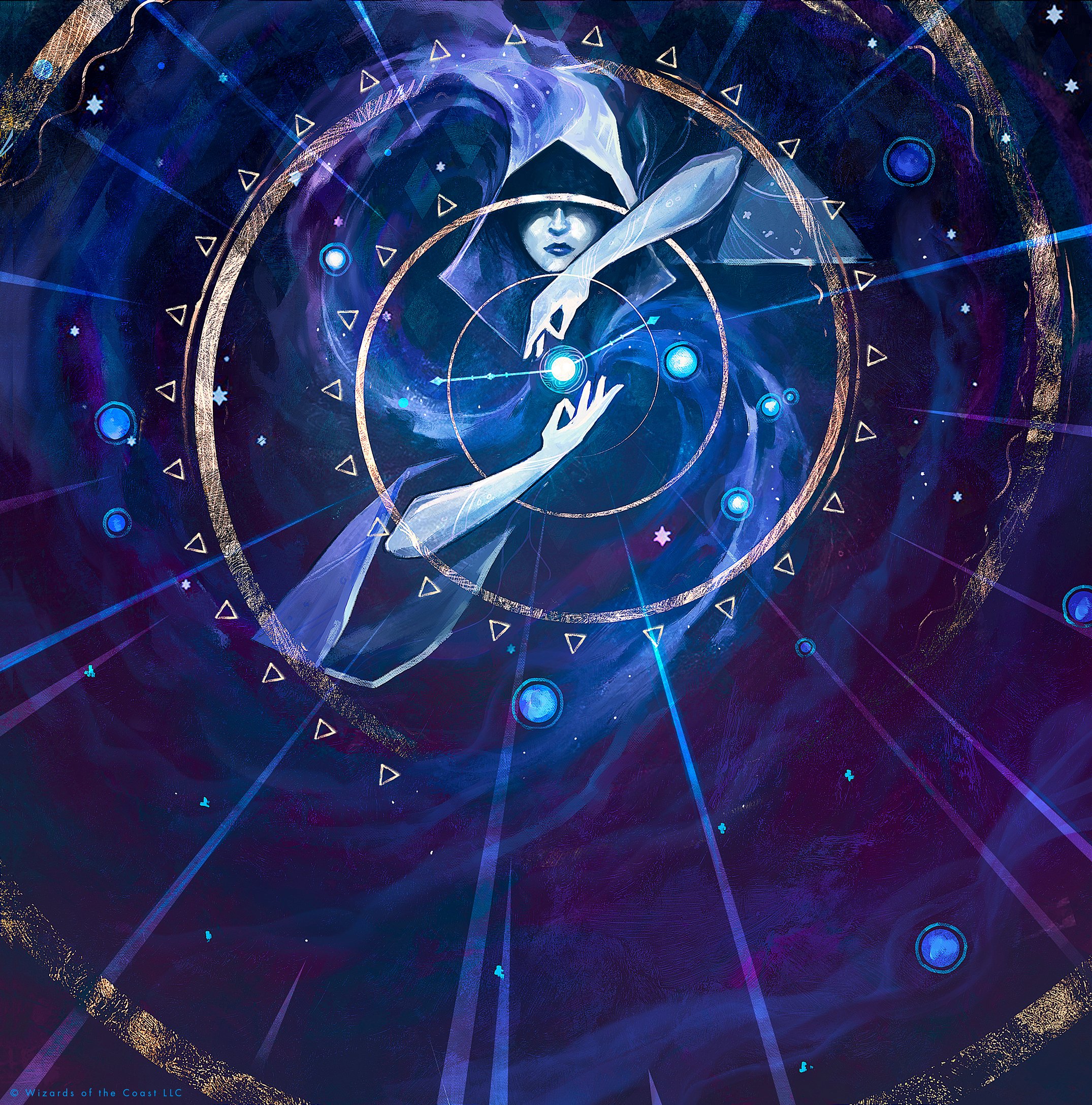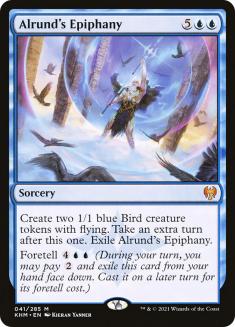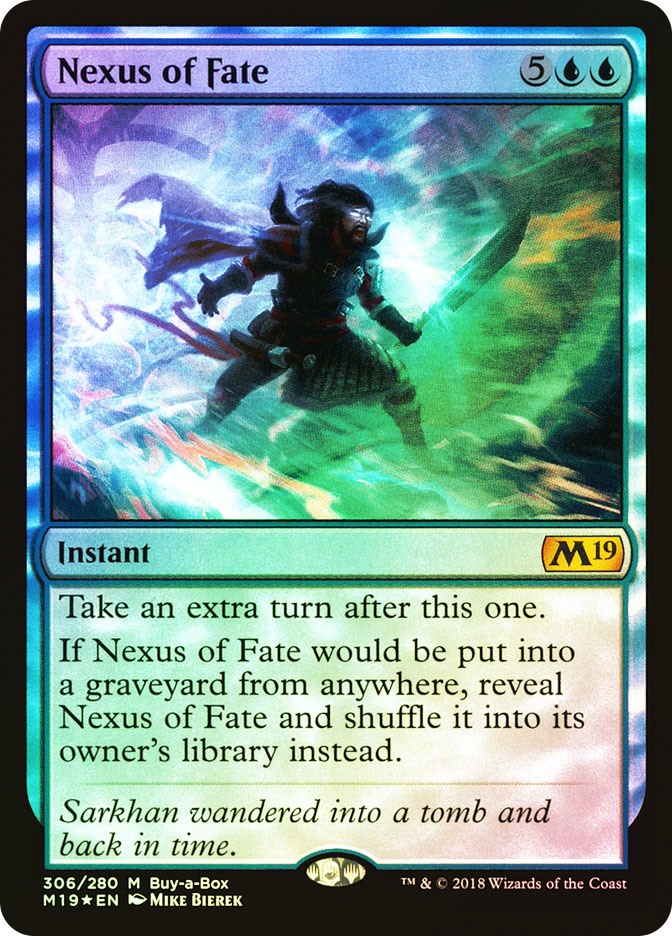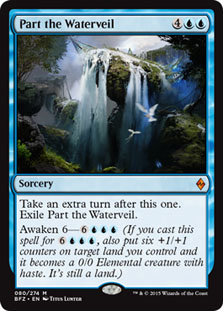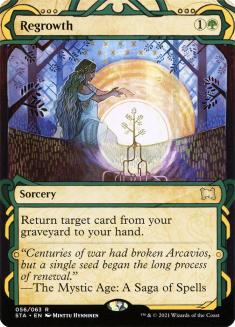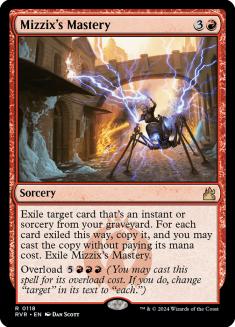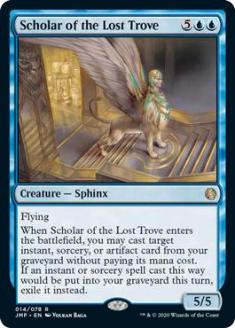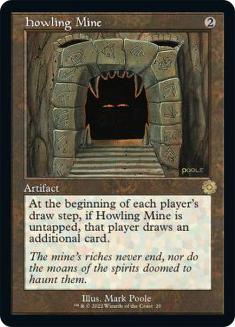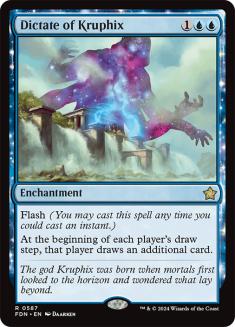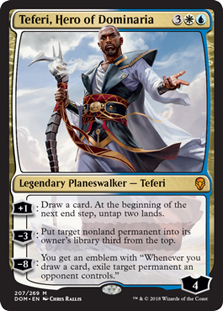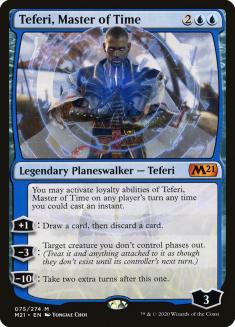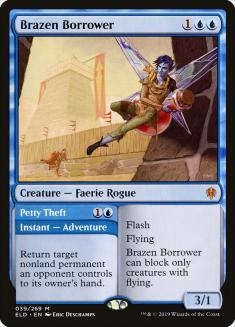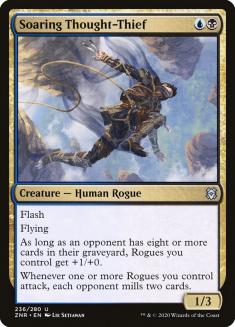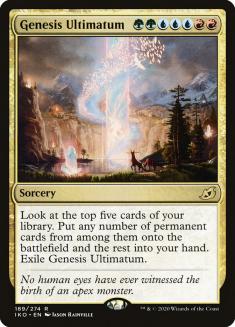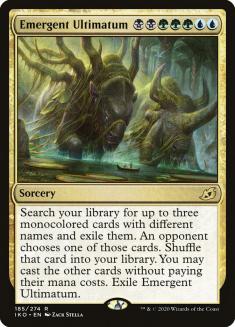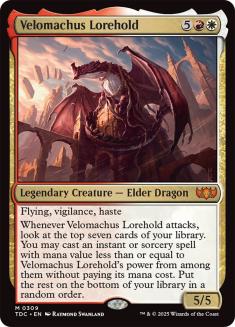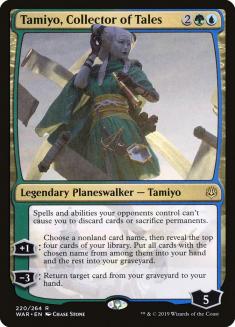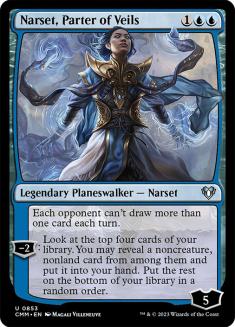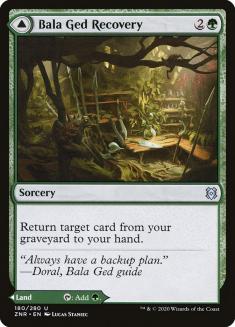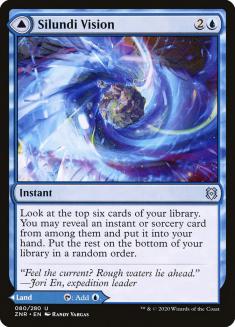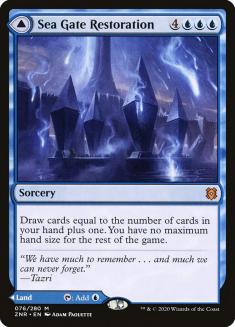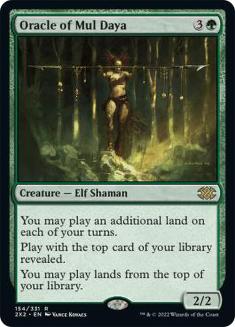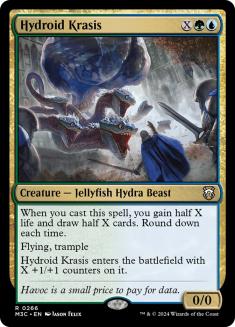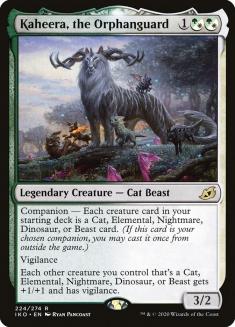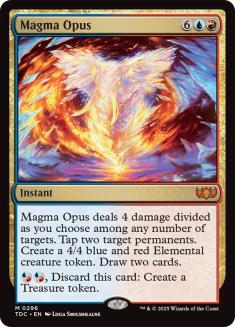We’re really doing this again?
After Historic Anthology IV dropped with a whimper, the Strixhaven Mystical Archive is poised to shake up Historic as much as any set has ever shaken up a format. Brainstorm and Faithless Looting are the headline acts, spawning new archetypes and boosting existing ones, but Time Warp stands out among these fan favourites.
Taking extra turns is a proven tactic in Constructed. Alrund’s Epiphany is a multi-archetype MVP in Kaldheim Standard; Nexus of Fate defined several formats and was deleted from some for its highly obnoxious play patterns. As Bryan Gottlieb has argued, this effect is powerful enough that even a relatively expensive or weak example will have a home as long as there are good tools to pair with it.
Time Warp is the cheapest (and therefore strongest) version and that’s already enough reason to be excited (or worried)! At just five mana, it’s easy to move the game to the point where you can cast the first Time Warp without needing to spend time and slots on ramp or other setup cards. If you do play Time Warp in a ramp shell, you get there even sooner and quickly reach the point where you can cast Time Warp and another spell in the same turn to capitalize on that extra mana.
The most unique thing about Time Warp is what it lacks — namely, the safety valve that sends all of the above cards to somewhere other than the graveyard when they resolve. This lets you cast the same Time Warp repeatedly via the wide range of general or specific recursion in Historic — including fellow Mystical Archive highlight Mizzix’s Mastery.
It’s worth looking at the structure of a turn to find rewards for taking an extra one — another trigger, another combat phase, and so on. Ari laid this out neatly in his preview piece for Temporal Mastery, the most overhyped Time Warp knockoff whose failure may have led experienced players to be too conservative when evaluating these effects (by contrast, newer players who somehow stuck around after having the same Nexus of Fate cast against them over and over again may be too optimistic).
The Modern approach of breaking the symmetry on cheap draw engines like Howling Mine isn’t possible with the Historic card pool but is worth noting in case Howling Mine finds itself parachuted into the format for no apparent reason.
It’s easier to unlock continuous card advantage via planeswalkers and these pair naturally with Time Warp — you guarantee another activation without the risk of losing your planeswalker in combat and the ultimate gives you a goal to chase. Decks hoping to chain Time Warps can end up spinning their tires to little effect if they don’t have a draw engine or a way to finish the game; having both on one card makes that plan more consistent and frees up more slots to increase the redundancy on your key pieces.
Teferi, Hero of Dominaria was so incredible in Bant Nexus because it let you find more copies of Nexus of Fate, gave you more mana to cast them, and lessened how often you had to do that to achieve something useful. Similarly, some pre-ban builds of Four-Colour Control in Modern used Wrenn and Six and Jace, the Mind Sculptor to recur Time Warp via fetchlands and Mystic Sanctuary, propelling you towards an actual lock (once you reached a Wrenn ultimate and could retrace Time Warp with every +1 on Wrenn) or just the crushing advantage you get from controlling Jace for several turns.
These sequences are easier when your engine card and Time Warp form a natural curve. Teferi and other appealing planeswalkers like Nissa, Who Shakes the World compete with Time Warp as five-drops and Historic doesn’t have the most iconic four-drop planeswalker in Jace, the Mind Sculptor, but there are enough cheap candidates to make the Superfriends approach work.
An obvious way to enjoy your extra turn is to keep attacking but this is harder in blue than in any other colour and the aggro-control decks that might explore that angle aren’t always well-suited for it . People are sure to try Izzet Phoenix once Strixhaven drops but that deck can’t really support a five-mana sorcery.
Vintage players like to joke that the base case for Time Walk is just Explore — it requires other pieces to achieve more, but those are so varied and easy to come by that you get there without trying, and the ceiling is so high that Time Walk’s Power 9 membership is unchallenged after almost 30 years.
Explore is an excellent card — a Simic Ramp deck with an interest in Time Walk gets up to eight thanks to Growth Spiral and probably wants them all — but the analogy takes a new direction once your Explore costs 3UU. Recent sets are full of incredibly strong six- and seven-drops that can singlehandedly win the game. Time Warp is a better bridge to those cards than a generic ramp spell, as you don’t have to pass the turn back, and Time Warp effectively paying for itself means you can cast your payoff as soon as you find it (here, on the extra turn).
This is most notable with Alrund’s Epiphany. A deck built around Time Warp likely wants some Epiphanies as backup and Time Warp curves perfectly into a foretold Epiphany. If you have any battlefield presence before that chain, it’s likely insurmountable by the end of it.
My first shell for Time Warp will look disturbingly familiar…
Creatures (2)
Planeswalkers (10)
Lands (20)
Spells (28)

It’s hard to overstate how strong Tamiyo, Collector of Tales is in this strategy. It helps to find the Time Warp that sets everything in motion and its high starting loyalty makes these chains trivial. Consider:
- Turn 2: Explore
- Turn 3: Tamiyo, Collector of Tales, use the +1 ability naming Time Warp (6 Loyalty)
- Turn 4: Cast Time Warp, use the -3 ability to recur Time Warp (3 Loyalty)
- Turn 4B: Cast Time Warp, use the +1 ability to dig for something else (4 Loyalty)
- Turn 4C: Use the -3 ability to recur Time Warp, cast Time Warp (1 Loyalty)
- Turn 4D: ?
With no other actions, Tamiyo translates into two extra turns and two Impulses for relevant cards. If you need to buy back Haze of Pollen in an emergency or a threat to make your extra turns more impactful, Tamiyo has you covered, all while protecting you from the discard effects that are the only form of interaction many decks can field against you. Brainstorm and Search for Azcanta are fantastic cards that don’t need the help, but Tamiyo working perfectly with them is a big point in their favour in these shells.
Narset, Parter of Veils was already excellent against most of the format — the midrange and control decks you’d expect it to beat, but also the Korvold, Fae-Cursed King turns from Jund Sacrifice and the Sram, Senior Edificer + Kor Spiritdancer engine from Orzhov Auras — and the Mystical Archive introduces not just Brainstorm and Faithless Looting but decks full of similar effects. Expect to see a lot of Narset in the coming months, especially in combo decks like this, where it finds all of your important pieces and even helps make land drops thanks to the modal DFCs:
A deck with eight total Explore + Growth Spiral as well as enough lands to justify them runs the risk of flooding. DFCs are good at mitigating this in general, but each serves a specific role here. Bala Ged Recovery represents another Time Warp eventually (and Warp only costing five mana means that casting both in a turn is more realistic), while Silundi Vision finds the all-important first copy.
Nissa needs no introduction but unsurprisingly excels here. She lets you build a lethal battlefield (you can attack for a total of eighteen damage after your third turn controlling Nissa) while giving you mana for recursion + Time Warp lines, and it’s easy enough to follow up with Time Warp on your Nissa turn if you have Breeding Pool (an argument for building your manabase around Triomes, but I’m wary of having too many lands that enter the battlefield tapped).
Simic Taking Turns has a deep bench of options in Historic. Oracle of Mul Daya was a workhorse in the Standard version that won our own Cedric Phillips’s heart and suggests a move towards Brainstorm and Fabled Passage that may well be correct anyway. Hydroid Krasis is always available as a double act with Nissa, and Kaheera, the Orphanguard is a proven option for those shells if you’re willing to give up Scholar of the Lost Trove.
The breakout deck of the Strixhaven League Weekend (in Kaldheim Historic… make it make sense!) is a natural home for Time Warp:
Creatures (4)
Planeswalkers (2)
Lands (25)
Spells (29)

An Alrund’s Epiphany by any other name would be a big pickup for Emergent Ultimatum, but Time Warp’s efficiency is especially useful for a deck that’s full of high-impact seven-drops, and the lack of the exile clause means you can use it early without worrying about losing an important piece of an Ultimatum pile.
Any blue deck should at least consider Brainstorm and there’s a strong case for it here — you want to have Emergent Ultimatum every game and don’t want to draw the cards it’s meant to find. You have to run some amount of removal and sweepers to keep up with aggro, but these are useless against the other half of the format, and being saddled with dead cards is a problem for such a mana-hungry deck. Brainstorm’s card replacement is a blessing here.
Sultai Ultimatum was the perfect choice to attack Mayhem Devil and other decks hoping to prey on it but stands to be outclassed by the powerful linear decks unleashed by the Mystical Archive unless it adapts promptly.
Time Warp may boost other decks trying to make the leap from Standard:
Creatures (23)
- 3 Lovestruck Beast
- 4 Beanstalk Giant
- 4 Edgewall Innkeeper
- 4 Bonecrusher Giant
- 4 Fae of Wishes
- 4 Brazen Borrower
Lands (27)
Spells (10)

Rivals League member Chris Botelho isn’t ready to put down Lucky Clover just yet. His Historic take on Four-Colour Adventures builds towards an Alrund’s Epiphany end-game but Time Warp is a much cleaner fit (certainly as a sideboard tool for Granted, and likely as a maindeck upgrade). Once again, five mana is so much less than seven when you always have uses for extra mana and want to cast Escape to the Wilds or Granted and your extra turn effect in the same turn.
Creatures (12)
Lands (25)
Spells (23)
- 4 Thoughtseize
- 2 Grafdigger's Cage
- 1 Fatal Push
- 4 Tyrant's Scorn
- 4 Into the Story
- 4 Drown in the Loch
- 1 Didn't Say Please
- 2 Shark Typhoon
- 1 Anticognition
Sideboard

Not to be outdone, fellow Rivals member Shintaro Ishimura lived up to his reputation by choosing Dimir Rogues for Historic. Its flash threats and versatile instant-speed interaction allow it to dictate the pacing of the game and Time Warp adds a new dimension to that — a seemingly empty battlefield can turn into several attacks from a gang of Rogues out of nowhere. Dimir Rogues is often compared to Faeries, a dominant deck in its Standard era, and Faeries had some success with Time Warp at the very end of its flight.
We can also build an aggro-control deck from first principles with Time Warp in mind:
Creatures (14)
Lands (21)
Spells (25)

This deck is a stack of Time Walks.
Memory Lapse? Almost a Time Walk. Tagging a crucial two-drop with Censor? Pretty much a Time Walk. The opponent playing around Censor even though it hurts their development and plays into your hands? You’d better believe that’s a Time Walk. Time Warp itself starts to look clunky by comparison.
Sprite Dragon is hurt by the lack of reach and cheap spells but shows up here anyway as its damage output rises alarmingly quickly with the help of Time Warp:
- Turn 2: Cast Sprite Dragon (1/1) and attack (Total damage = 1).
- Turn 3: Cast Baral, Chief of Compliance and attack with Sprite Dragon (2); cast Censor or Memory Lapse on the opponent’s turn, triggering Baral and Sprite Dragon (Dragon = 2/2).
- Turn 4: Cast Time Warp (Dragon = 3/3) and attack (5).
- Turn 4B: Cast Mizzix’s Mastery (Dragon = 4/4), which casts a copy of Time Warp (Dragon = 5/5), and attack (10).
- Turn 4C: At minimum, you can attack (15). Another Time Warp is lethal; any combination of spells is close to it.
Once you commit to Mizzix’s Mastery to pair with Time Warp, Magma Opus is highly tempting as a way to threaten a brutally effective combo as early as Turn 3. It’s possible that this shell is trying to do too much and would be better off as either a dedicated tempo deck featuring Time Warp or a combo-control deck following the template Michael Majors gave last week but this is an intriguing proof of concept.
Mizzix’s Mastery is not just the perfect partner-in-crime for Time Warp. It conveniently finds itself in the same set as Faithless Looting, making some wild combo decks possible:
Creatures (7)
Lands (22)
Spells (31)

Velomachus Lorehold is clearly capable of incredible things — you just have to work out what those are. Unless you can increase its power, you’re limited to spells with mana value five or less, and that shuts off anything you could reliably use for a big finish.
Time Warp changes all that. With four copies of Time Warp, a Velomachus trigger has a good chance of finding one and letting you do it all again; if you already used one, Mizzix’s Mastery and Unburial Rites (for Scholar of the Lost Trove) act as additional copies to boost your odds even further.
Somehow, every part of this deck is replaceable, including the Velomachus engine at its core. The Twitter chatter that inspired this list featured a variety of primary or secondary Unburial Rites targets, from Niv-Mizzet, Parun to Jadzi, Oracle of Arcavios. There are more cheap enablers than you can play at once (if you have Cathartic Reunion, how about Thrilling Discovery?). This deck has blue mana, so let’s talk about Brainstorm! And why bother jumping through these hoops for Velomachus Lorehold when you can Mizzix’s Mastery for Emergent Ultimatum and win on the spot, as Gerry Thompson showed this week? Once you get there, you barely need Time Warp at all…
This offers a scary note to end on. It doesn’t matter what the biggest and best things are in Historic. What matters is that you can now expect to face them on Turn 4 or earlier with impressive consistency.

